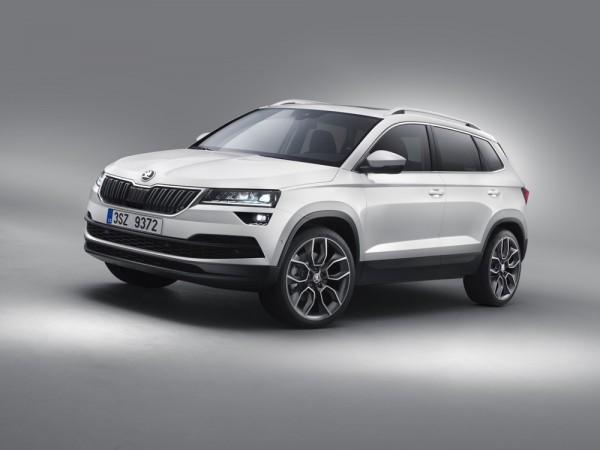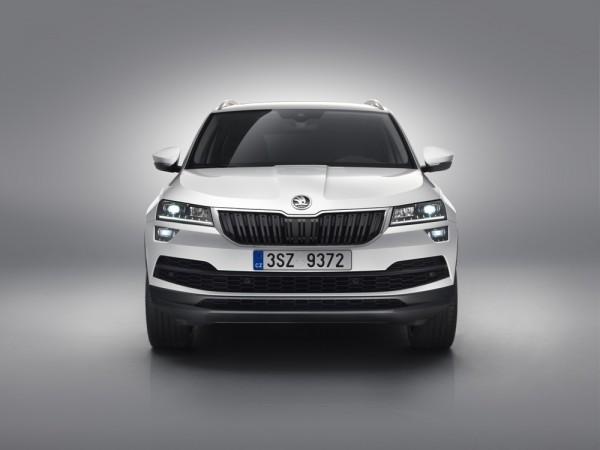
After a really long teaser campaign, Czech carmaker Skoda Auto has revealed its new compact SUV, the Karoq. As expected, the Karoq looks like a miniature version of the flagship Kodiaq SUV. The younger sibling borrows the angular design theme of Kodiaq, which is extracted from the VisionS design study concept unveiled at the 86th Geneva Motor Show in March 2016.
Also read: Booking for Skoda Kodiaq SUV starts ahead of India launch in mid-2017
The Karoq will replace the Yeti crossover in Skoda's line-up as part of the renewal process of Skoda's SUV portfolio. Yeti is known for its funky design treatment while the Karoq is longer, wider, more butch but a less funky replacement.
Apart from the obvious change in dimension compared to the Kodiaq SUV, Karoq's headlight and taillight design are slightly different. The sleek headlights are wider than those of Kodiaq, while additional lights on the top of the bumper have been reshaped as well. At the rear, the C-shaped LED taillight gets a new look and extends onto to the upper area of the trunk lid.
The Karoq is 4,382mm long, 1,841mm wide, 1,605mm tall, and with a generous wheelbase of 2,638mm. It has exceptional 521-litres of cargo with the rear seats in place. If they are folded down, the boot capacity increases to 1,630 litres. The three independent rear seats can actually be removed entirely to give the Karoq a maximum load capacity of a whopping van-like 1,810-litres.

Skoda offers a number of new technologies as options in the Karoq and an all-digital instrument cluster is the highlight. Full-LED headlights, wireless smartphone charging, electric tailgate, 10-colour LED ambient lighting, Wi-Fi hotspot, and even an LTE module for the top-of-the-range infotainment system are the options available.
The Karoq will be available in five engine variants – two petrol and three diesel engines. The displacements of the engines are ranges are 1.0, 1.5, 1.6 and 2.0-litres and the power range is from 113bhp to 188bhp. All the powertrains feature turbo-charged direct injection units as well as start-stop technology and brake energy recovery. Barring the most powerful 2.0-litre diesel mill, all engines can be mated with a six-speed manual gearbox or seven-speed DSG.
The 2.0 TDI with 188bhp comes as standard with 4×4 drive and seven-speed DSG. The new 1.5 TSI that made its debut in the facelifted Golf boasts cylinder deactivation tech. From the Ambition trim level upwards, Driving Mode Select with the Normal, Sport, Eco, Individual and Snow (4x4) modes is available on request in the Karoq.

The Karoq will go on sale in the global markets by the end of this year. India launch is expected in 2018. The Indian subsidiary is currently gearing up for the launch of the Kodiaq SUV.














![India Auto Roundup: Maruti Suzuki, Mahindra have exciting launches in November [details here]](https://data1.ibtimes.co.in/en/full/805520/india-auto-roundup-maruti-suzuki-mahindra-have-exciting-launches-november-details-here.jpg?w=220&h=135)